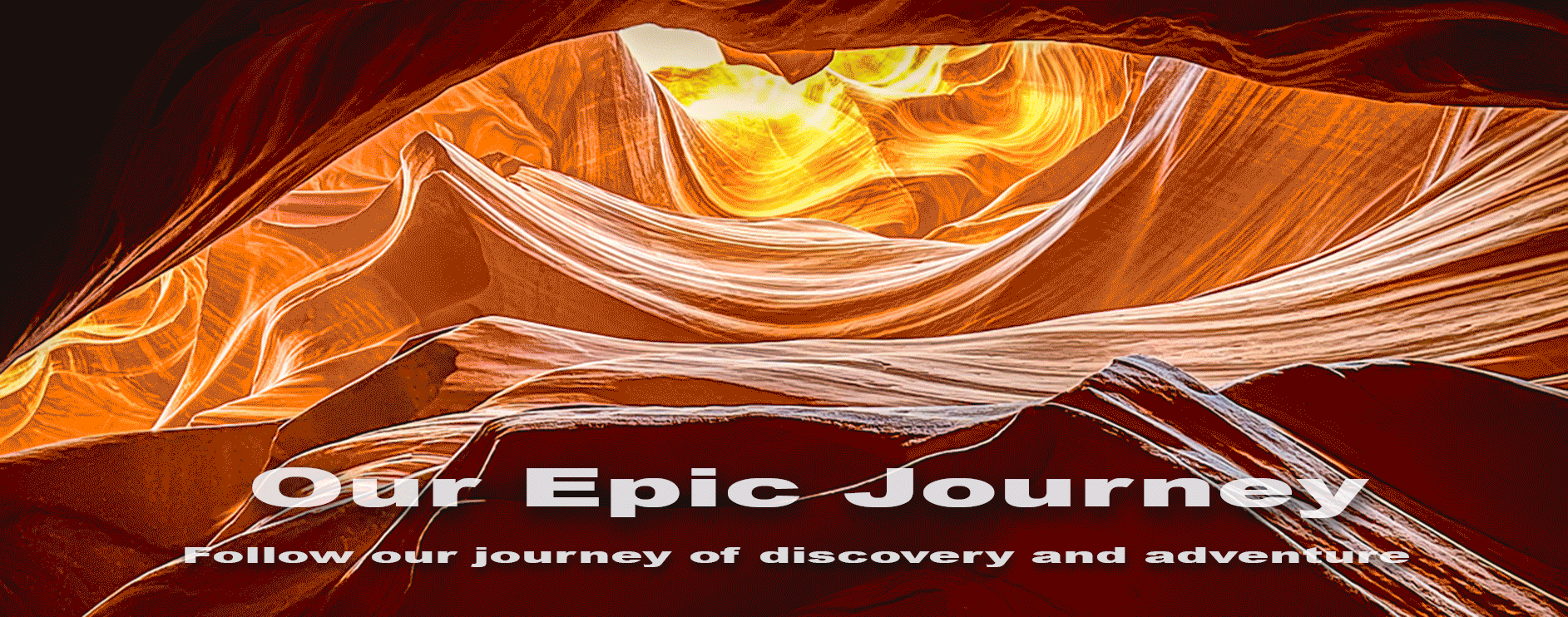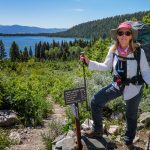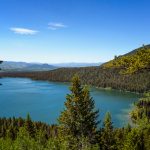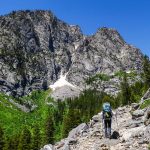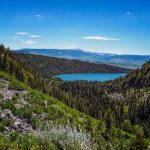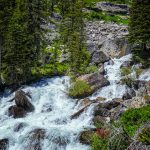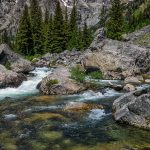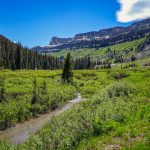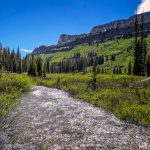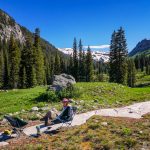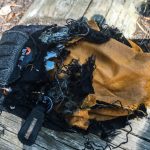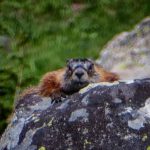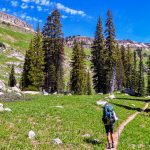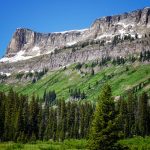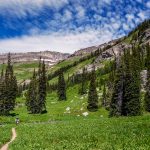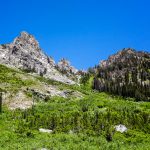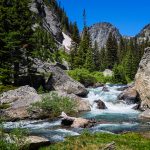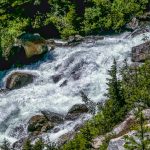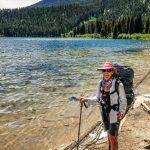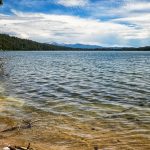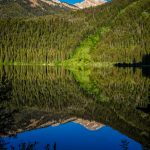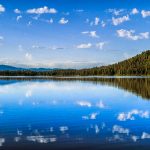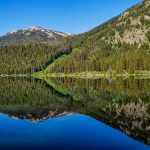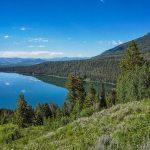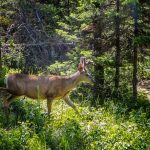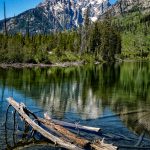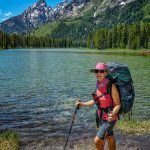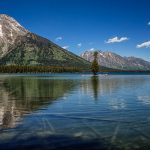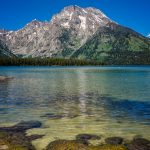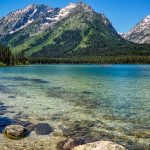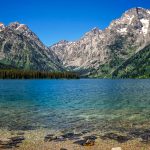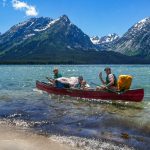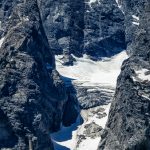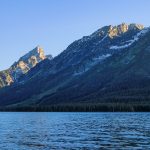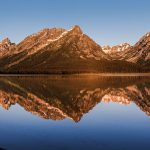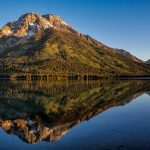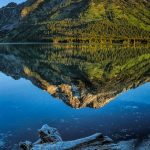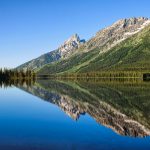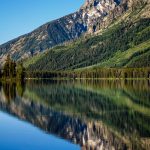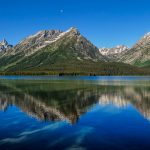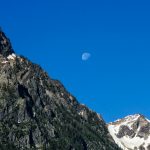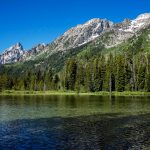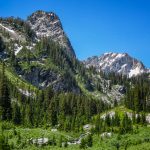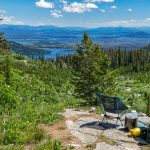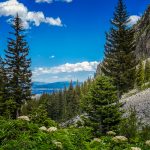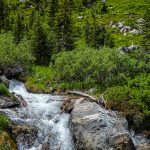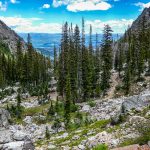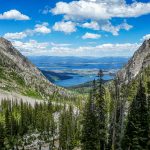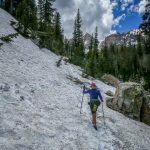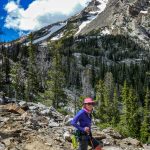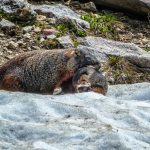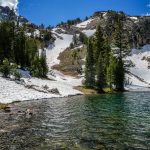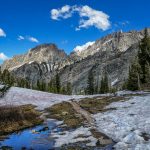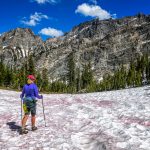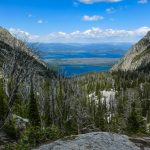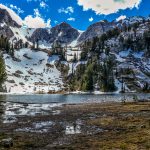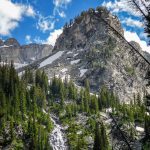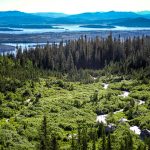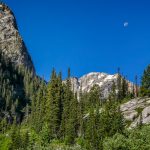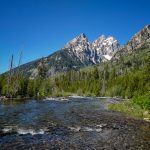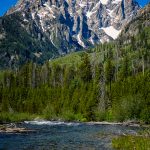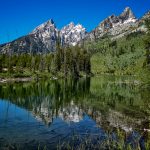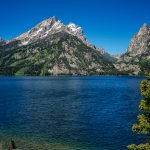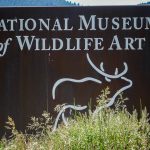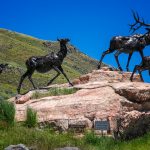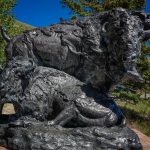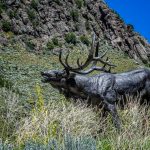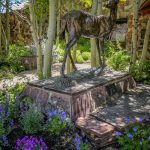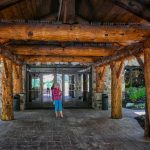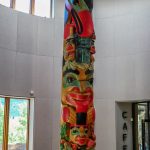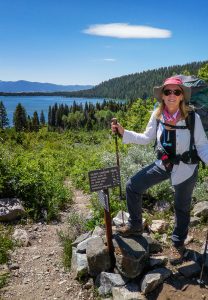 We went into Jackson Hole to get backcountry permits for our backpacking trip into Grand Teton National Park. We had to go to the Jenny Lake Visitor Center in Moose, WY, just outside of Jackson. The Ranger was very helpful and suggested some great trips for us to go on, but we could not go above 9,500 ft because of the deep snow on the trail. Therefore, we could not do a loop, so we decided to go into Death Canyon for 2 nights and come back to our car and drive to the trailhead for Leigh Lake and Paintbrush Canyon and go in for 2 more nights. What a great idea because we only have to carry enough food for 2 days and leave the other 2 days of food in the car when we get back there. The weather looks great for the total 5 days that we will be out. Armed with 2 cans of bear spray we set out for our backpacking trip.
We went into Jackson Hole to get backcountry permits for our backpacking trip into Grand Teton National Park. We had to go to the Jenny Lake Visitor Center in Moose, WY, just outside of Jackson. The Ranger was very helpful and suggested some great trips for us to go on, but we could not go above 9,500 ft because of the deep snow on the trail. Therefore, we could not do a loop, so we decided to go into Death Canyon for 2 nights and come back to our car and drive to the trailhead for Leigh Lake and Paintbrush Canyon and go in for 2 more nights. What a great idea because we only have to carry enough food for 2 days and leave the other 2 days of food in the car when we get back there. The weather looks great for the total 5 days that we will be out. Armed with 2 cans of bear spray we set out for our backpacking trip.
We drove to the Death Canyon Trailhead and parked the Jeep in the shade and started up the trail. About a mile in we arrived at the Phelps Lake Overlook, at 7,200 ft elevation, we had outstanding panoramic views of the 750-acre, glacially-carved lake, the 6th largest in the Grand Teton NP. From the overlook we descended to the valley floor with more views of the lake and of the mouth of Death Canyon where we were headed, and where we will begin the strenuous climb paralleling Death Canyon Creek. The views up the canyon, as well as back down the valley towards Phelps Lake and Jackson Hole, were outstanding and made the hike worth all the effort. At 4 miles in we arrived at the historic Death Canyon Patrol Cabin, which was originally built as a barn by the CCC in 1935, but became a ranger patrol cabin in 1945. We stopped to talk to a Ranger who was out for a hike and while we chatted with her, two marmots were happily eating the shingles on the roof which made her very upset, and took pictures for proof. It was getting late and we still had a long way to go before we reached our campsite, so off we went up, up and up.
Once we reached an opening in the trees and could see Death Canyon we started looking for a campsite and decided to stay in a perfect site with views of the Canyon and Death Canyon Shelf covered in snow. Before we even set up our tent the marmots were all over our gear and getting into our backpacks taking things out to chew on. So we eat dinner closer to camp to keep the marmots away. When we were going to bed Bob couldn’t find his new camera. We went to search the area where we had first rested, and I found the camera case all chewed up but no camera, a little further away dragged across the rocks was the camera. Now I know why the Ranger was so upset, marmots will eat anything in sight. Click on thumbnail to view images
We woke up to a beautiful sunny morning, with wonderful views of Death Canyon Shelf while eating breakfast. The marmots were watching us but we were wiser today and did not leave anything unattended. We packed up and headed back down the same trail following Death Canyon Creek to the turn off to Phelps Lake. At the north end of the lake there is a small sandy beach and we continued along the eastern shore to our campsite above the lake. From the shore we had spectacular views of the surrounding mountains, especially 11,241-foot Prospectors Mountain across the still water. We spent a relaxing afternoon and evening enjoying the solitude and peacefulness of our campsite. Click on thumbnail to view images
Today we got up with the sunrise to take pictures of the mountains reflected in the mirrored-lake. It was absolutely stunning to see the clouds’ and mountains’ reflection in the still glass water of Phelps Lake. Back on the trail, we hiked up to the Phelps Lake Overlook and out to the Jeep. We drove to the Leigh Lake Trailhead, located just north of Jenny Lake. We parked in a large parking lot and took the path down to String Lake, and headed north along the eastern shore of String Lake watching several people in canoes and kayaks on the lake. Immediately we had great views of 12,325-foot Teewinot Mountain and 11,144-foot Rockchuck Peak, rising above String and Leigh Lakes. And further along the shores of String Lake we had absolutely stunning views of Mt Moran. At 12,605 feet Mt Moran is the 4th highest mountain in Grand Teton NP, and it’s named for artist Thomas Moran whose landscape paintings were critical to the creation of Yellowstone NP.
At about 1 mile from the trailhead we arrived at the Leigh Lake portage trail, we continued straight ahead to Leigh Lake and to our amazing campsite on the shores of the lake. These sites are among the premier backcountry campsites in the entire park and I can certainly understand why. We arrived early so we could enjoy swimming in the lake and soaking in the outstanding views of the middle Tetons, which includes Teewinot Mountain, Rockchuck Peak, 11,590-foot Mt Woodring and Mt Moran to the right, and a view of Falling Ice Glacier on Mt Moran. Leigh Lake is the third largest lake in the Tetons, with a maximum depth of 250 feet, is one of the deepest, named after Richard “Beaver Dick” Leigh, an itinerant trapper and early tour guide in the area. We spent the entire afternoon sitting in our camp chairs on the beach starring out at the marvelous scenery nature has to offer. Click on thumbnail to view images
Once again we were up at sunrise to capture first light on the Teton mountains reflected on the surreal stillness of the mirrored water of Leigh Lake. Unbelievable!!! We could not stop taking photos, as the images just kept getting more and more amazing as the sunlight changed the colors of the mountains. We hated to leave this beautiful campsite but unfortunately the mosquitoes were attacking us, so we moved on to hike up Paintbrush Canyon. We crossed over Leigh Lake Outlet on a footbridge and began our ascent through a lodgepole pine forest to Paintbrush Canyon. As we hiked up to Paintbrush Canyon Creek, about 4 miles, we arrived at an overlook with a great view of Leigh Lake and our campsite. We crossed over the creek and the trail emerges into fairly open terrain and great views into Paintbrush Canyon. As we walked through chest high vegetation, we made lots of noise and we were constantly “bear aware” at all times. We found a super campsite high up on a rock ledge with fabulous views of Leigh Lake and Jackson Lake in the distance, the last site in Lower Paintbrush Canyon.
We set up our tent and ate lunch before going further up the trail to Holly Lake. As we climbed higher through a large boulder field we eventually reached the snow level and had to make our way through some treacherous snowy sections, thankful that we didn’t have our heavy packs on. At last we arrived at Holly Lake, at 9,410 feet elevation, with lots of snow surrounding the lake. This small glacial lake lies just below the southern slopes of 11,590-foot Mt Woodring and directly to the west is Paintbrush Divide covered in snow. Bob took lots of photos and then we headed back down to our campsite as it was getting late. We met an older man hiking by himself who was totally lost and on the wrong trail, and we told him to camp down where we were, below our tent, and when we got back to our campsite we passed him asleep in his homemade tarp. He was safe for tonight. Click on thumbnail to view images
We slept in this morning as it is our last day and it is all down hill. Saw great views of Leigh Lake and Jackson Lake from our campsite while eating breakfast, enjoying this wonderful scenery from our camp chairs was surreal. Eventually we packed up and descended the 6.5 miles back to String Lake, and continued to hike around the rest of the Lake. We captured more views of the middle Tetons across String Lake before heading back to our Jeep. Unfortunately we did not see any wildlife on this back country trip, so we decided to go to the Museum instead. We went for lunch at the Rising Sage Cafe in the National Museum of Wildlife Art, opened in September 1994, a 51,000 sq. ft. state of the art building. After lunch we walked around the 3/4 mile Sculpture Trail, designed by award-winning landscape architect Walter Hood, presenting fine art sculpture within the fabric of Jackson Hole’s incomparable landscape. The Sculpture Trail opened in 2012. Click on thumbnail to view images
